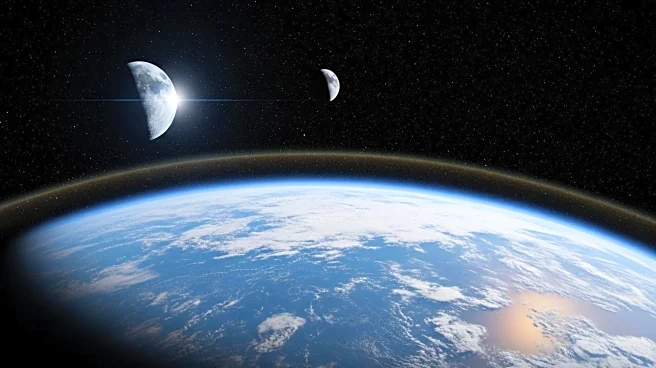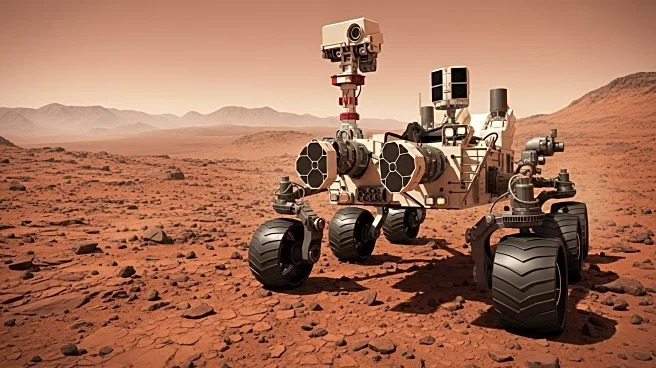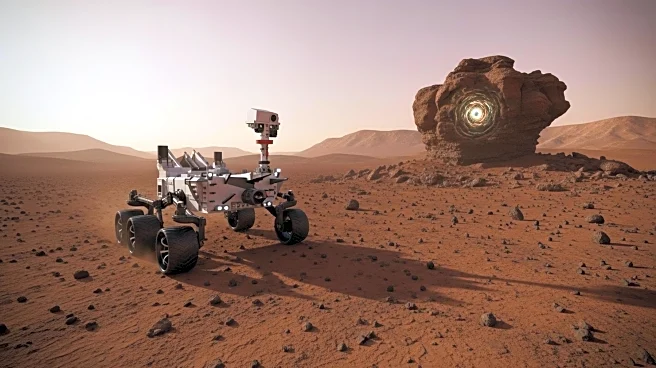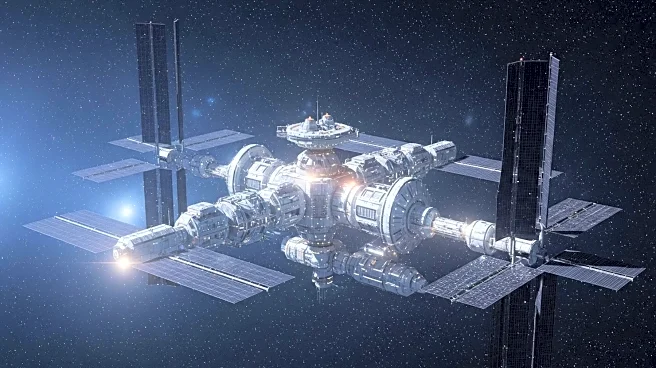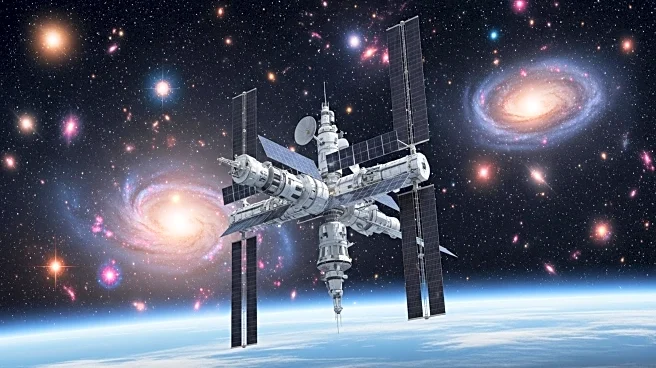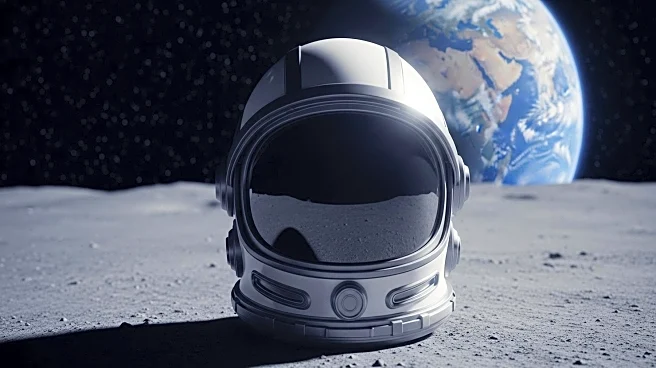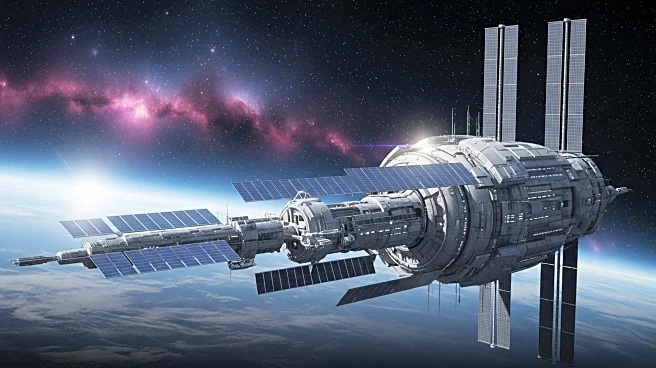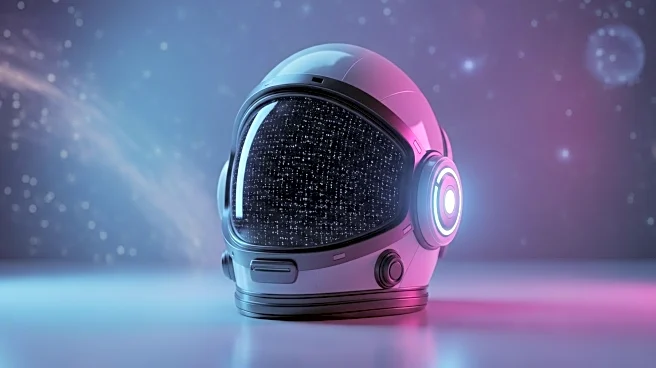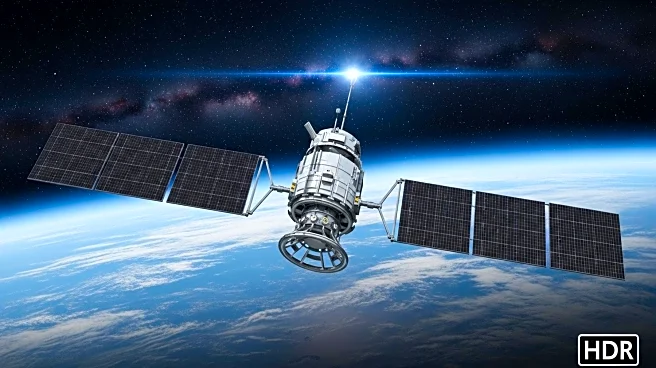What's Happening?
A previously unknown bacterium, named Niallia tiangongensis, has been discovered on the Chinese space station Tiangong. This bacterium was identified during a routine mission by the Shenzhou-15 crew in May 2023. The bacterium is notable for its unique adaptation to the space environment, including its ability to break down gelatin for nitrogen and carbon, which aids in forming protective biofilms. This discovery is part of the China Space Station Habitation Area Microbiome Program (CHAMP), which studies the microbiome of the Tiangong station. The bacterium's presence raises questions about microbiological risks in space, as it shares similarities with bacteria that can cause severe infections in immunocompromised individuals.
Why It's Important?
The discovery of Niallia tiangongensis highlights the potential risks of microbial life in space, which could affect the health and safety of astronauts. The bacterium's ability to adapt and potentially develop antibiotic resistance poses a challenge for managing contamination in space missions. This finding underscores the need for comprehensive studies on how microorganisms evolve in space environments, which is crucial for future manned missions to the Moon, Mars, and beyond. Understanding these dynamics is essential for ensuring the safety of space missions and preventing damage to equipment from microbial proliferation.
What's Next?
Researchers will likely focus on further studying the characteristics and behavior of Niallia tiangongensis to assess its potential impact on human health and space missions. There may be increased efforts to monitor and control the space microbiome to prevent contamination and ensure the safety of future missions. This discovery could lead to the development of new protocols for managing microbial life in space, emphasizing the importance of anticipating how these organisms adapt to extreme environments.

